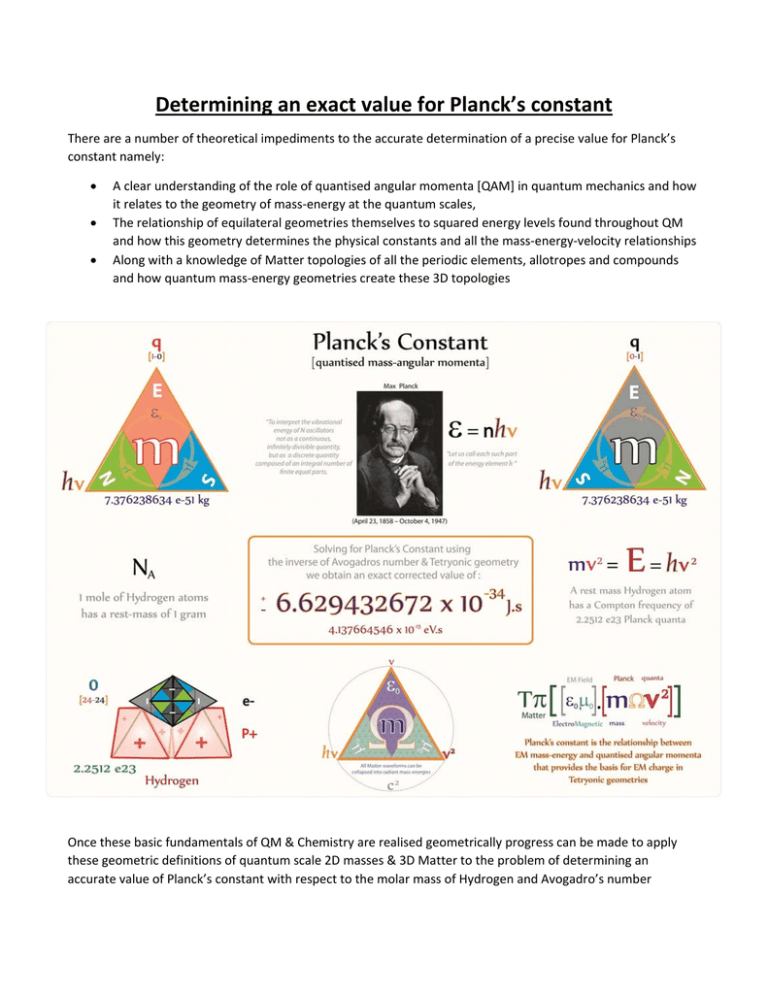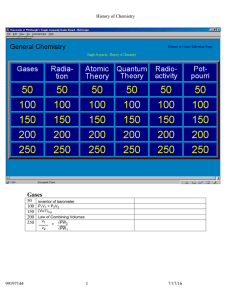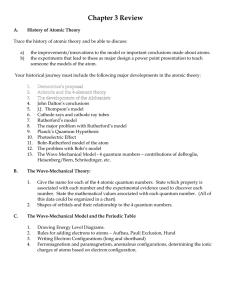Determining an exact value for Planck`s constant
advertisement

Determining an exact value for Planck’s constant There are a number of theoretical impediments to the accurate determination of a precise value for Planck’s constant namely: A clear understanding of the role of quantised angular momenta [QAM] in quantum mechanics and how it relates to the geometry of mass-energy at the quantum scales, The relationship of equilateral geometries themselves to squared energy levels found throughout QM and how this geometry determines the physical constants and all the mass-energy-velocity relationships Along with a knowledge of Matter topologies of all the periodic elements, allotropes and compounds and how quantum mass-energy geometries create these 3D topologies Once these basic fundamentals of QM & Chemistry are realised geometrically progress can be made to apply these geometric definitions of quantum scale 2D masses & 3D Matter to the problem of determining an accurate value of Planck’s constant with respect to the molar mass of Hydrogen and Avogadro’s number The elegance of this geometric approach to the determination of quantised mass-Matter is that it affords no room for assumptions (or known number chasing) that occurs so frequently in the mathematics of modern physics today – the charged equilateral geometry [QAM] of Planck’s constant is fixed and acts to provide a foundational quantum ‘grammar’ to the ‘language’ of mathematics in QFT and the rest of physics. Quantum properties such as Compton frequency and deBroglie wavelengths can now be revealed in terms of physical geometries at the quantum scale along with the realisation that the averaged atomic mass of Hydrogen [1/12th that of Carbon12] is no longer an accurate estimate of atomic mass [being in error by ½ the mass of an electron]. For so long Chemists have ignored the mass of the electron in atomic mass calculations as being of no significance wrt the mass of a Proton, and have relied on a weighted estimate of the mass of Hydrogen for their chemical calculations and measurements. This can now be corrected to an exact value of Hydrogen (and all other elements and compounds) inclusive of the photo-electron and its quantum level mass-energy content The ground level Hydrogen atom has a fixed mass-Matter topology of 48 pi [36p Proton + 12 pi electron] exclusive of kEM field energies of motion, and a total Planck quanta number of 2.2512 e23 which in turn must match the inverse of Avogadro’s number [the number of atoms in one mole of Matter] – in the case of Hydrogen this turns out to be 1.660538841 e-24 kg We can then further apply this value for the rest mass of Hydrogen to the number of quanta in Hydrogen’s mass-Matter topology as per Tetryonic theory [H = 2.2512 e23 Planck quanta] to determine an exact value of Planck’s constant from first foundations and its application to QM, QED & Chemistry. Leading to a major re-definition of averaged atomic masses and atomic weights in Chemistry. This value in concert with Tetryonic theory and Avogadro’s number then permits us to model and estimate the exact rest molar mass content of all Matter topologies in turn leading us to a major correction in the topological model of all atomic nuclei and compounds Of particular note is the fact that Tetryonic theory clearly shows that Deuterium [not Hydrogen] is the foundational Matter quantum of all periodic elements and atomic nuclei. Deuterium alone can account for the Schrodinger wave numbers of periodic elements and provide a mechanism for the binding of protons and neutrons in atomic nuclei that the current atomic model fails to provide – as a result it is clearly demonstrated that there are no ‘excess neutrons contributing to atomic mass and each element has equal numbers of protons, neutrons and electrons in accordance with their atomic Z numbers. All of which can and have been modelled in 3D in Tetryonic Chemistry illustrations, along with all their quantum properties to provide the first complete atomic topology of all elements and compounds ……… providing a much closer match to the quantum numbers of Schrodinger’s wave equation for all elements and creating a new periodic table and accurate 3D quantum models of all atoms in the process. The new Periodic table of elements (reflecting the quantum topology of all Matter)




